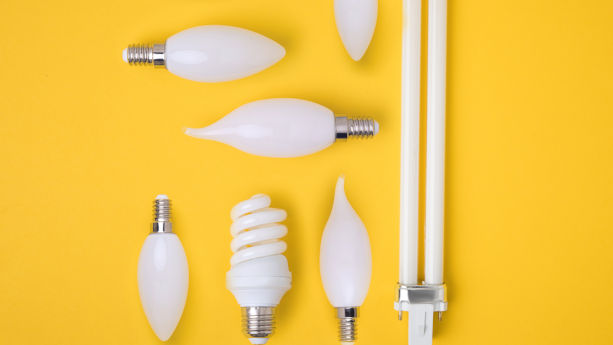
Are you an importer or manufacturer looking to use the ENERGY STAR mark for your products? Having the mark on your product communicates that your product is more energy efficient.
This article covers the ENERGY STAR program and its associated marks and addresses common questions associated with the program. The primary source for this article comes from the U.S. Environmental Protection Agency, ENERGY STAR program.
Content Overview

FREE CONSULTATION CALL (US, EU & UK)
- Request a free 30-minute call with Ivan Malloci to learn how we can help you with:
- Find product requirements
- Certification and labeling
- Lab testing
Overview
The ENERGY STAR refers to the joint program between the Environmental Protection Agency (EPA) and the Department of Energy (DOE).
Several legislative instruments were used in the development of the program, including the Energy Policy and Conservation Act (EPCA) which outlines the responsibilities of the EPA and the DOE in relation to it.
The EPCA directs the EPA and DOE to do some of the following:
a. Promote ENERGY STAR-compliant technologies as the preferred technologies in the marketplace for achieving energy efficiency and reducing pollution
b. Enhance public awareness of the ENERGY STAR label
c. Preserve the integrity of the label
d. Update regularly the ENERGY STAR product criteria for product categories
e. Solicit comments from interested parties before establishing or revising an ENERGY STAR product category, specification, or criterion
What does the ENERGY STAR mark mean?
The ENERGY STAR is a government-backed mark that symbolizes energy efficiency. It serves as a guarantee that products carrying the mark are independently certified and deliver energy efficiency performance to consumers. Additionally, the mark symbolizes cost savings as such products are energy efficient.
Is the ENERGY STAR mark recognized in other countries?
Several countries have signed agreements with the EPA to administer the ENERGY STAR program in their own markets. However, note that the ENERGY STAR mark is limited to the US or one of the partner countries that is administering that aspect of the program (e.g. testing protocols, specifying requirements for labeling).
The following are partnering countries that have implemented the ENERGY STAR program or parts of the program:
- Canada
- Japan
- Switzerland
- Taiwan
Product scope
The following are some product types that can bear the ENERGY STAR mark:
a. Heating and cooling products – air-source heat pumps, boilers, central air conditioners, ductless heating and cooling, furnaces, geothermal heat pumps, room air conditioner, ventilation fans, smart thermostats
b. Appliances – air purifiers, clothes dryers, dehumidifiers, dishwashers, freezers, refrigerators
c. Water heaters – Heat pump water heaters, high-efficiency gas storage water heaters, solar water heaters, whole-home tankless gas water heaters
d. Lighting – ceiling fans, decorative light strings, light bulbs, light fixtures
e. Building products – residential windows, doors, and skylights, seal and insulate, storm windows
f. Office equipment – computers, imaging equipment, monitors, VoIP phones
g. Electronics – audio/video, digital media player, set-top boxes, slates and tablets, telephones, televisions
For a fully exhaustive list of covered products, you can visit this page which provides detailed information about each product category.
Is the ENERGY STAR logo mandatory?
The ENERGY STAR program is voluntary. Thus, the logo is not mandatory. The purpose of the program is to distinguish products that meet rigid requirements for product qualification from those that only meet mandatory energy regulations. The subsequent section illustrates how rigid the requirements are not only for acquiring the mark but also for maintaining the qualification.
The only end user that is compelled by law to use ENERGY STAR products is the federal government and its agencies. Federal agencies can only lease space in buildings that have acquired the ENERGY STAR mark.
What are the requirements for using the ENERGY STAR logo?
As previously mentioned the ENERGY STAR program is a voluntary one. However, manufacturers that elect to use the ENERGY STAR mark and realize the benefits of its international reputation would have to adhere to highly rigid requirements.
ENERGY STAR Brand Book
This book is available online and provides instructions on how the ENERGY STAR’s name and its related marks should be used.
As outlined in the book, there are four categories of ENERGY STAR marks:
a. Certification marks – this mark serves as a label on products, homes, and buildings
b. Partnership marks – used to promote the organization’s commitment to and partnership in the program
c. Promotional marks – used in educational and promotional materials to educate others about the program and its benefits
d. Linkage phrase marks – used in promotional materials to show that the organization offers certified products or builds certified homes
The usage of such marks can be reviewed by the EPA to ensure adherence to the book’s guidelines.
To earn and use the above marks for products, interested organizations should sign a partnership agreement to join the ENERGY STAR program. The program includes certification and lab testing requirements which are expanded upon in subsequent sections.
FTC’s EnergyGuide Label
The book details other special conditions in which the mark may be used, including its inclusion in the Federal Trade Commission’s EnergyGuide Label for certain appliances, televisions, and HVAC equipment.
Provided that such products have earned the right to use the mark, they may be added to the label in black.
Certification
The EPA requires ENERGY STAR products to be certified by a third-party certification body (CB) that is recognized by the federal agency. The CB reviews lab-tested products and certifies product performance after which such products may carry the ENERGY STAR mark.
Third-party certification body (CB)
Some other responsibilities of the CB include:
a. Enrolling first-party laboratories in a witnessed or supervised manufacturers’ testing laboratory (W/SMTL) program
b. Reporting certified products and corresponding data to the EPA, including products that are ineligible for certification
c. Administering verification testing and challenge testing, and sharing the results
d. Staying engaged in the development of new and revised product specifications and test procedures
Certification requirements
Manufacturers interested in identifying the particular product specifications and partner commitments for their desired product to obtain the ENERGY STAR label can use the product specifications search function on the ENERGY STAR site.
You can employ filters to refine your search to the desired regulated product category and read the latest ENERGY STAR program requirements. Here are some of the items found in the product requirements document.
a. Terms and conditions of use for the ENERGY STAR name and marks
b. Providing information to the EPA
c. Verifying ongoing product qualification
d. The eligibility criteria for different product types
e. Energy and water performance requirements
f. Test requirements
Note that for some product categories, the requirements may contain references to non-US legislative instruments and regulations. For instance, on display monitors, the latest program requirements mandate partners to ensure that models associated with the ENERGY STAR name and mark meet the EU restriction of hazardous substances (RoHS) legislation’s product material requirements.
Lab testing requirements
ENERGY STAR products must be tested by an accredited third-party laboratory or a first-party lab that is participating in a CB’s W/SMTL program. The manufacturer should enquire whether the lab has the required testing facilities and equipment for the product type.
Additionally, the manufacturer should confirm with a CB that the lab is acceptable under the CB’s program for that product type.
Accredited labs and CBs can be found on the ENERGY STAR site. However, EPA-recognized labs participating in a CB’s W/SMTL program are not listed in the database.
Required test methods
Depending on the product type, there are required test methods that the lab would perform. Here are some products types and the legal sources of their respective test methods:
a. Residential and Commercial Clothes Dryers – 10 CFR 430, Subpart B, Appendix D2
b. Residential Refrigerators – 10 CFR 430, Subpart B, Appendix A
c. Residential Freezers – 10 CFR 430, Subpart B, Appendix B
d. Dehumidifiers – 10 CFR 430, Subpart B, Appendix X1
e. Room Air Conditioners – 10 CFR 430, Subpart B, Appendix F
Are there any fees associated with the ENERGY STAR program?
Organizations that join the ENERGY STAR program would have to settle the fees with their chosen laboratories and certification bodies directly to obtain the required third-party testing services and verification. Such fees and costs may differ between such labs and certification bodies.




















